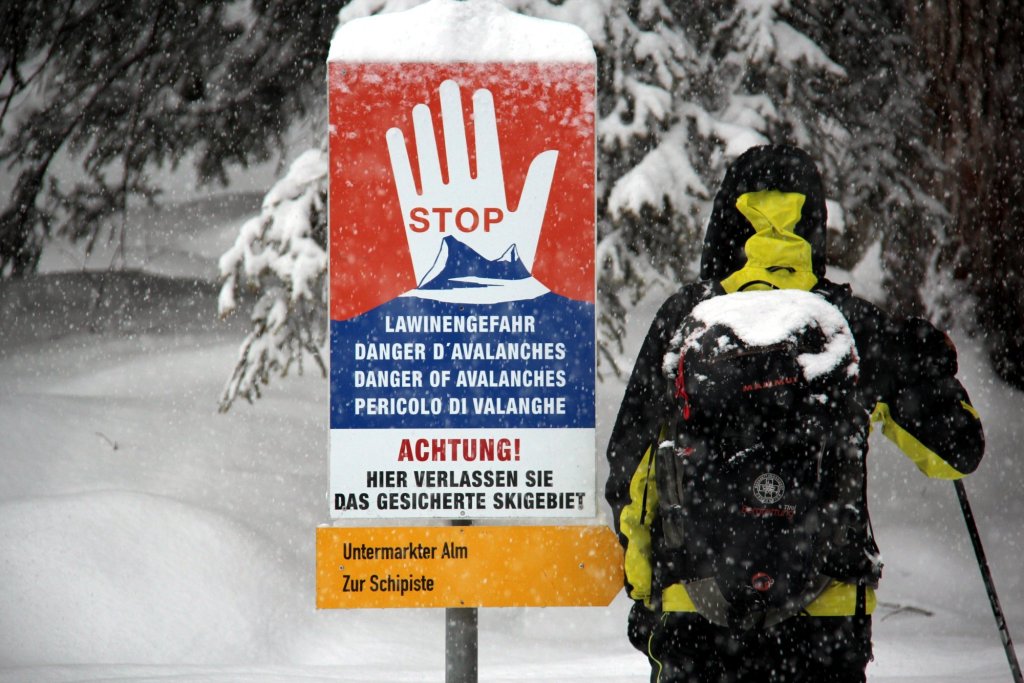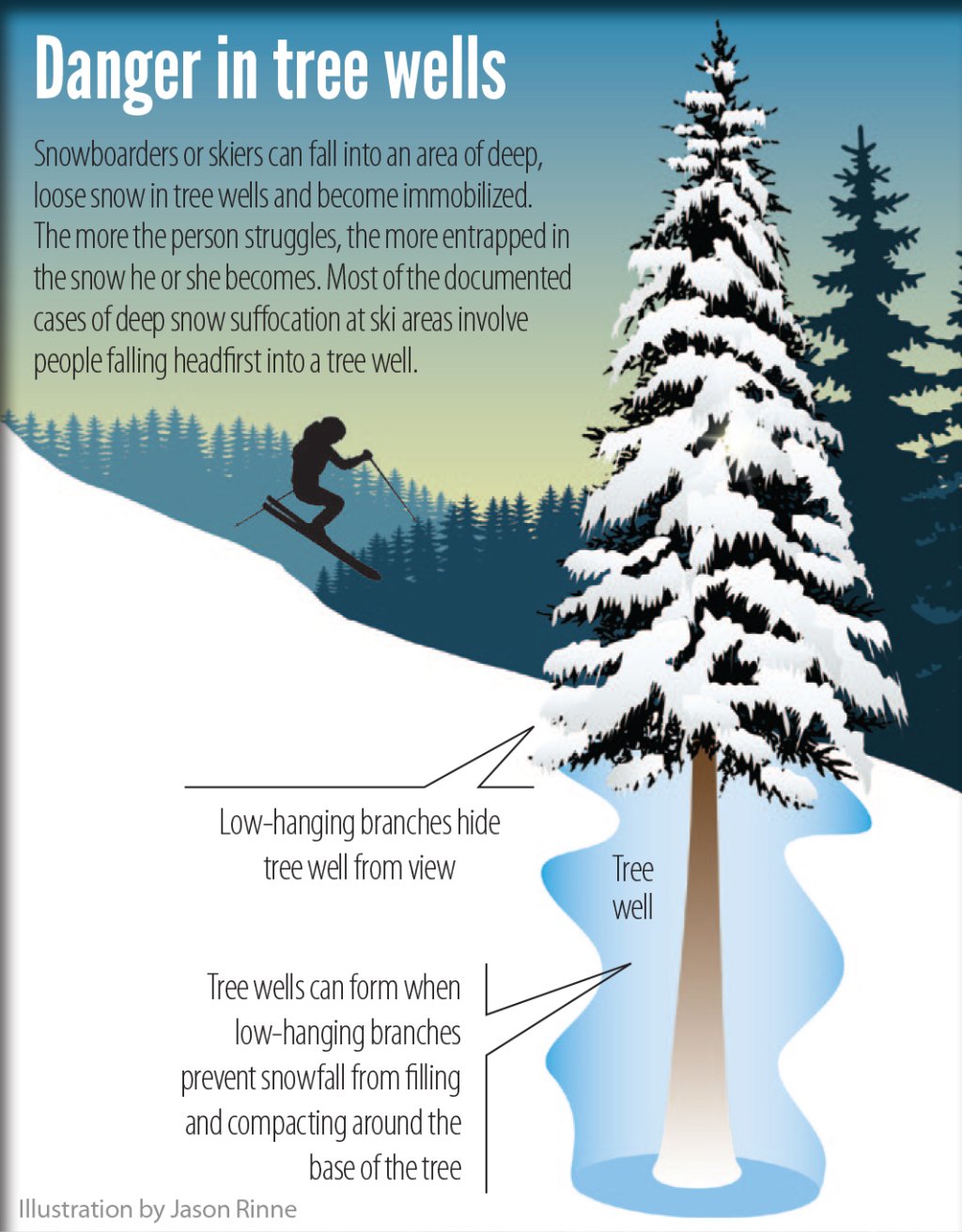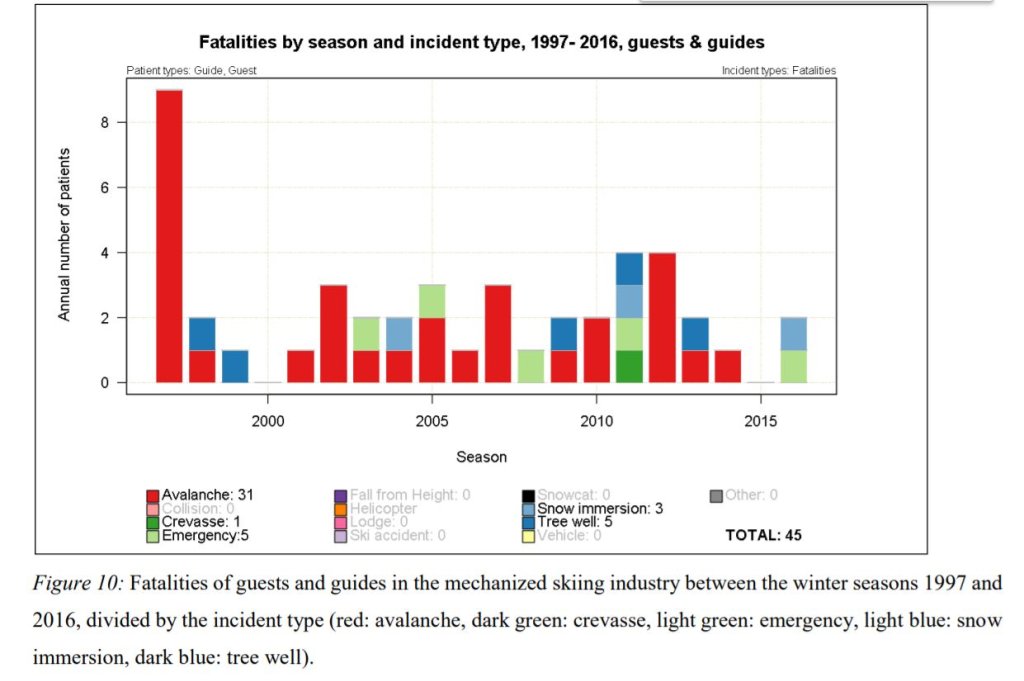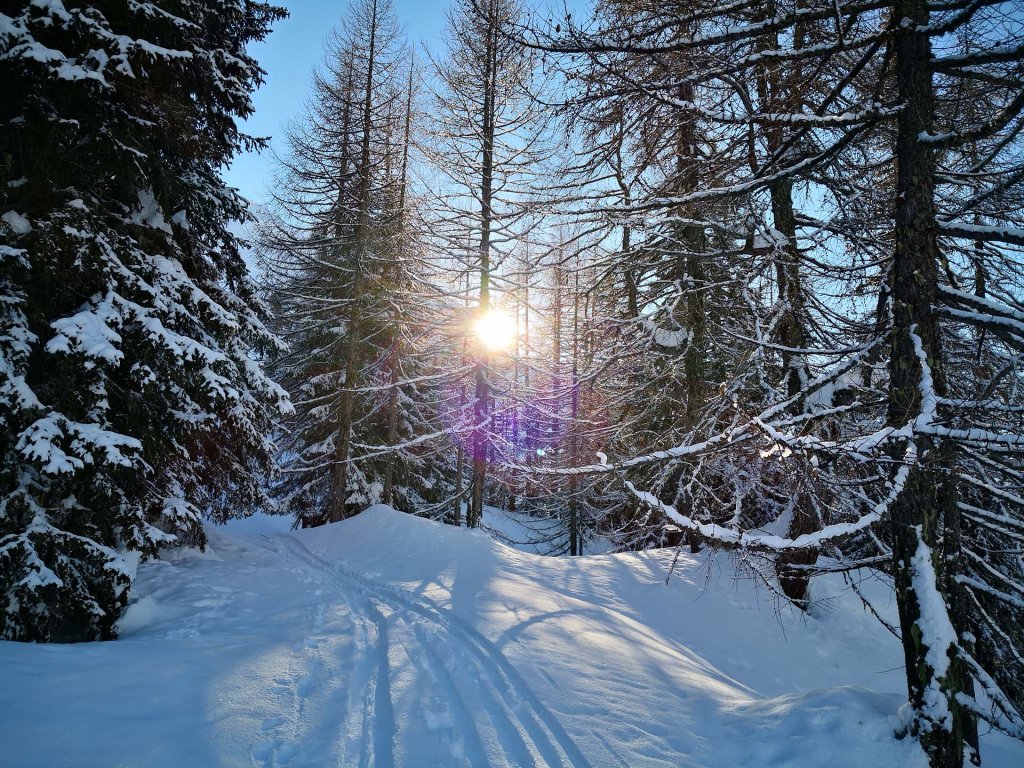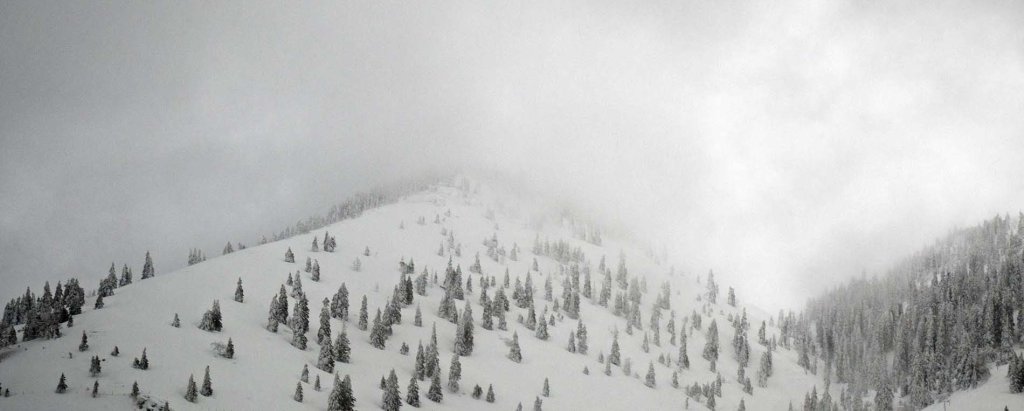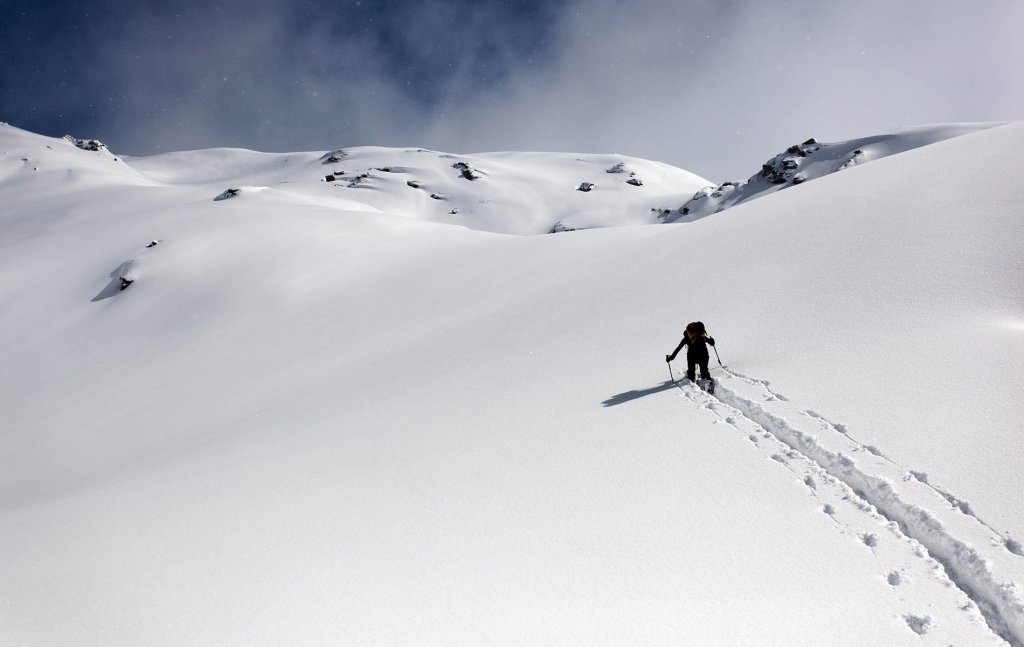Lots of fresh snow = high avalanche danger
Nonanet, the main danger during intense fresh snowfall comes from avalanches. We already explained why this is the case during the heavy snowfall period in January 2018. Read about it in SnowFlurry 5 2017/18. Because lots of old snow is usually very safe in terms of avalanches, but lots of new snow is a problem.
Lots of new snow = high risk of suffocation when Powderguide.com
No question, while the snow is still falling, you ski the best, loosest, least settled powder snow. This is because the settling of fresh snow progresses extremely quickly, especially during intensive snowfall. On the one hand, it is always rather warm when the intensity of precipitation is high. Secondly, the weight of the fresh snow itself massively accelerates the degradation process. The snow compresses itself, almost like a snowcat driving over it. Only when the snow is at its freshest does it really sink in several meters deep. After 24 hours, the story looks completely different again.
As soon as the sinking depths exceed 1 m on average, there is a risk of no longer being able to get out of snow holes under your own steam. As you can only ski in the denser forest in such situations due to the risk of avalanches, hollows or other terrain traps become a deadly danger. Due to the weak wind in the forest, much more fresh snow can slowly but surely accumulate there. If you fall in bottomless, meter-deep powder and don't reach a harder surface, you can hardly get back on your feet on your own. Especially if you come to rest upside down, there is no chance of getting out of the predicament on your own. This happens most often when you fall into mountain pines, large alpine roses or other undergrowth that you could no longer see on the surface. A little sluff immediately slides down from above and suffocates you as if in a real avalanche. This cause of death is known as "snow immersion" and almost always claims victims during prolonged heavy snowfall, even in the Alps. Here are examples from media reports from 2012, 2018, 2019. The greater the potential for a face shot, the greater the risk of snow immersion.
Similar problems are known in North America, which repeatedly claim lives. The so-called tree wells. These are circular cavities around the trunks of conifers. These are often not visible from the outside, as they are covered by weak snow bridges, similar to crevasses in glaciers. If you fall headfirst into a deeper tree well, you are hopelessly lost on your own.
An example of an accident involving a tree well fall can be seen in the following YouTube video. Category: A must-see!
